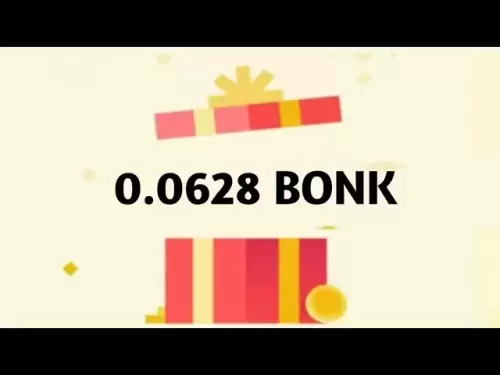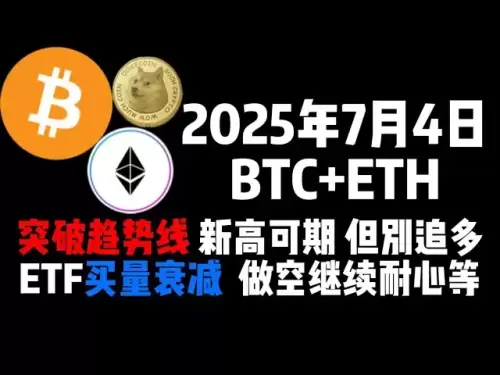-
 Bitcoin
Bitcoin $107,925.2701
-1.48% -
 Ethereum
Ethereum $2,497.5244
-3.00% -
 Tether USDt
Tether USDt $1.0003
0.00% -
 XRP
XRP $2.2210
-1.77% -
 BNB
BNB $652.7259
-0.99% -
 Solana
Solana $146.3621
-3.35% -
 USDC
USDC $0.9999
0.01% -
 TRON
TRON $0.2831
-0.98% -
 Dogecoin
Dogecoin $0.1624
-5.00% -
 Cardano
Cardano $0.5691
-4.05% -
 Hyperliquid
Hyperliquid $38.3575
-4.92% -
 Sui
Sui $2.8509
-4.98% -
 Bitcoin Cash
Bitcoin Cash $486.3924
-2.09% -
 Chainlink
Chainlink $13.0606
-4.57% -
 UNUS SED LEO
UNUS SED LEO $9.0490
0.29% -
 Avalanche
Avalanche $17.6631
-4.58% -
 Stellar
Stellar $0.2379
-1.47% -
 Toncoin
Toncoin $2.7722
-3.33% -
 Shiba Inu
Shiba Inu $0.0...01132
-4.45% -
 Litecoin
Litecoin $87.0042
-2.80% -
 Hedera
Hedera $0.1535
-3.40% -
 Monero
Monero $315.6490
-1.97% -
 Dai
Dai $0.9999
0.00% -
 Polkadot
Polkadot $3.3326
-5.82% -
 Ethena USDe
Ethena USDe $1.0001
0.00% -
 Bitget Token
Bitget Token $4.3957
-3.76% -
 Uniswap
Uniswap $6.9049
-9.33% -
 Pepe
Pepe $0.0...09601
-3.89% -
 Aave
Aave $262.2817
-6.10% -
 Pi
Pi $0.4718
-4.35%
How to manage Binance's cross-period contract positions?
To manage Binance's cross-period contracts, set up your account, understand key terms like expiration and leverage, and use tools like stop-loss orders to minimize risks effectively.
Apr 10, 2025 at 10:14 pm
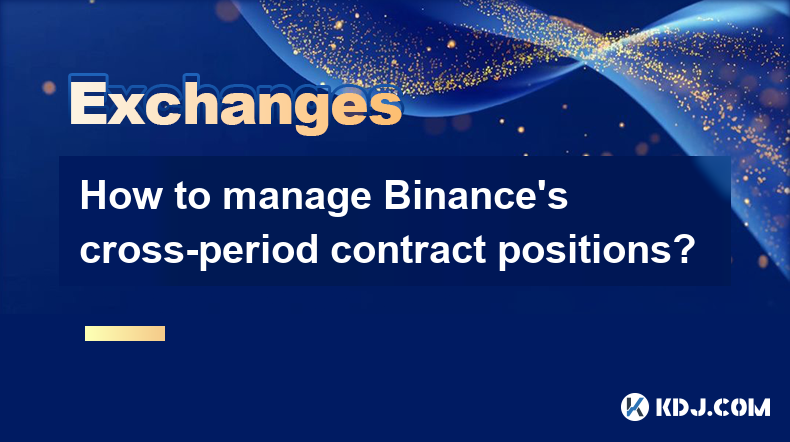
Managing Binance's cross-period contract positions involves understanding the mechanics of these contracts, setting up your account, and executing trades effectively. This article will guide you through the process step-by-step, ensuring you have a comprehensive understanding of how to manage your positions.
Understanding Cross-Period Contracts
Cross-period contracts on Binance are a type of futures contract that allows traders to speculate on the future price of a cryptocurrency. Unlike perpetual contracts, cross-period contracts have a defined expiration date, which can range from weekly to quarterly. These contracts are settled at the expiration date based on the underlying asset's price.
To manage these positions effectively, it's crucial to understand the key terms:
- Expiration Date: The date when the contract expires and is settled.
- Settlement Price: The price at which the contract is settled at expiration.
- Leverage: The ability to control a large position with a relatively small amount of capital.
- Margin: The amount of capital required to open and maintain a position.
Setting Up Your Binance Account for Cross-Period Contracts
Before you can start trading cross-period contracts, you need to set up your Binance account properly. Here's how to do it:
- Log into your Binance account: Ensure you have a verified account with the necessary KYC (Know Your Customer) procedures completed.
- Navigate to the Futures Trading Section: Click on the "Derivatives" tab, then select "USDT-M Futures" or "COIN-M Futures" depending on your preference.
- Enable Futures Trading: Go to the "Futures" section, click on "Enable Futures", and follow the prompts to activate futures trading.
- Transfer Funds to Your Futures Wallet: Click on "Transfer", select the asset you want to transfer, enter the amount, and confirm the transfer to your futures wallet.
Opening a Cross-Period Contract Position
Once your account is set up, you can start opening positions in cross-period contracts. Here's how to do it:
- Select the Contract: Go to the "USDT-M Futures" or "COIN-M Futures" section and choose the cross-period contract you want to trade. Make sure to select the correct expiration date.
- Set Your Leverage: Click on the "Leverage" button and adjust it to your desired level. Remember, higher leverage increases both potential profits and risks.
- Place Your Order: Decide whether you want to go long (buy) or short (sell). Enter the amount you want to trade and set your entry price. You can choose between a market order or a limit order.
- Market Order: Executes immediately at the current market price.
- Limit Order: Executes only when the market reaches your specified price.
- Confirm Your Order: Review your order details and click "Buy/Long" or "Sell/Short" to confirm.
Managing Your Open Positions
After opening a position, you need to manage it effectively to maximize your potential returns and minimize risks. Here are some strategies:
- Monitor Your Position: Keep an eye on the market and your position's performance. Use the "Positions" tab to view your open positions and their unrealized P&L (Profit and Loss).
- Adjust Your Leverage: If the market moves against you, you might want to reduce your leverage to avoid liquidation. Click on the "Leverage" button and adjust it accordingly.
- Set Stop-Loss and Take-Profit Orders: To manage risk, set stop-loss and take-profit orders. Click on the "TP/SL" button next to your open position, enter the desired prices, and confirm.
- Stop-Loss Order: Automatically closes your position if the price reaches a certain level to limit losses.
- Take-Profit Order: Automatically closes your position if the price reaches a certain level to lock in profits.
- Close Your Position: When you're ready to close your position, go to the "Positions" tab, select the position you want to close, and click "Close Position". Confirm the order to execute it.
Handling Margin and Liquidation
Managing your margin is crucial to avoid liquidation. Here's how to handle it:
- Check Your Margin Level: Regularly check your margin level in the "Positions" tab. If it falls below the maintenance margin level, you risk liquidation.
- Add More Margin: If your margin level is low, you can add more funds to your futures wallet. Go to the "Transfer" section, select the asset, enter the amount, and confirm the transfer.
- Reduce Position Size: If you can't add more margin, consider reducing your position size to lower your risk. Go to the "Positions" tab, select the position, and click "Reduce Only" to adjust your position size without opening new positions.
Using Advanced Trading Tools
Binance offers several advanced trading tools that can help you manage your cross-period contract positions more effectively:
- TradingView Charts: Use TradingView charts to analyze market trends and make informed trading decisions. Click on the "Chart" tab to access these charts.
- Trading Bots: Binance offers trading bots that can automate your trading strategies. Go to the "Trading Bots" section, select a bot, and set up your parameters.
- API Trading: For advanced users, Binance provides an API that allows you to automate your trading using custom scripts. Go to the "API Management" section to set up your API keys.
Frequently Asked Questions
Q: Can I switch from a cross-period contract to a perpetual contract?
A: No, once you open a position in a cross-period contract, you cannot switch it to a perpetual contract. You would need to close your current position and open a new one in a perpetual contract.
Q: What happens if I hold a cross-period contract until expiration?
A: If you hold a cross-period contract until expiration, it will be automatically settled at the settlement price. Any profits or losses will be credited or debited from your futures wallet.
Q: How can I avoid liquidation in cross-period contracts?
A: To avoid liquidation, monitor your margin level closely, add more margin if necessary, reduce your position size, or set stop-loss orders to limit potential losses.
Q: Can I trade cross-period contracts on the Binance mobile app?
A: Yes, you can trade cross-period contracts on the Binance mobile app. The process is similar to trading on the desktop version, with the same features and tools available.
Disclaimer:info@kdj.com
The information provided is not trading advice. kdj.com does not assume any responsibility for any investments made based on the information provided in this article. Cryptocurrencies are highly volatile and it is highly recommended that you invest with caution after thorough research!
If you believe that the content used on this website infringes your copyright, please contact us immediately (info@kdj.com) and we will delete it promptly.
- Bitcoin's Pattern Break: Are HODLers the Key to the Next Surge?
- 2025-07-04 18:50:12
- Bitcoin Price, Trump's Bill, and the $150K Dream: A NYC Take
- 2025-07-04 19:50:12
- Ethereum, LILPEPE, and the July Bounce: Will Pepe Steal ETH's Thunder?
- 2025-07-04 19:10:12
- Binance Institutional Loans: Unlocking 4x Leverage and Zero Interest for Whales
- 2025-07-04 19:15:12
- Bitcoin Bull Run: Analysts Eye Peak in Late 2025?
- 2025-07-04 19:20:13
- Pepe Indicators, Bullish Forecast: Can the Meme Coin Rally?
- 2025-07-04 19:25:12
Related knowledge
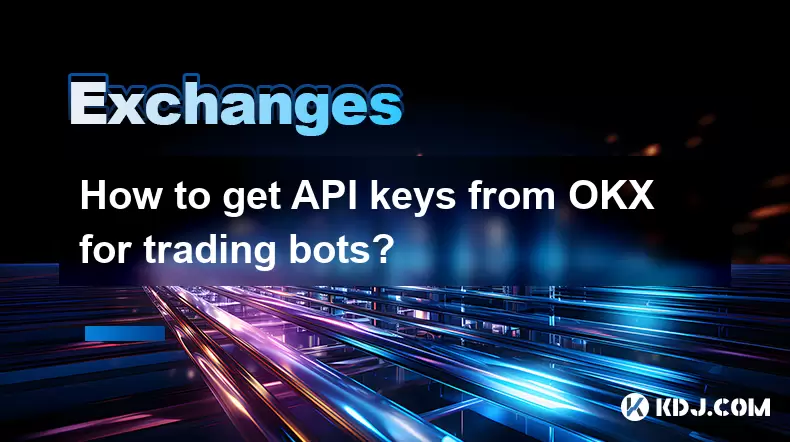
How to get API keys from OKX for trading bots?
Jul 03,2025 at 07:07am
Understanding API Keys on OKXTo interact with the OKX exchange programmatically, especially for building or running trading bots, you need to obtain an API key. An API (Application Programming Interface) key acts as a secure token that allows your bot to communicate with the exchange's servers. On OKX, these keys come with customizable permissions such ...
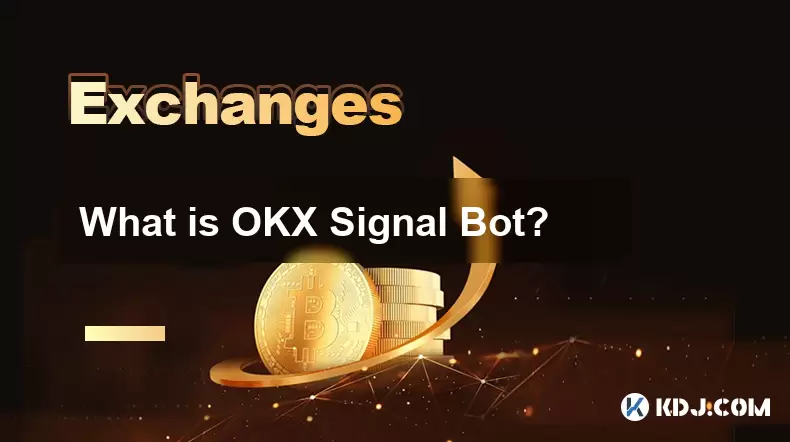
What is OKX Signal Bot?
Jul 02,2025 at 11:01pm
Understanding the Basics of OKX Signal BotThe OKX Signal Bot is a feature within the OKX ecosystem that provides users with automated trading signals and execution capabilities. Designed for both novice and experienced traders, this bot helps identify potential trading opportunities by analyzing market trends, technical indicators, and historical data. ...
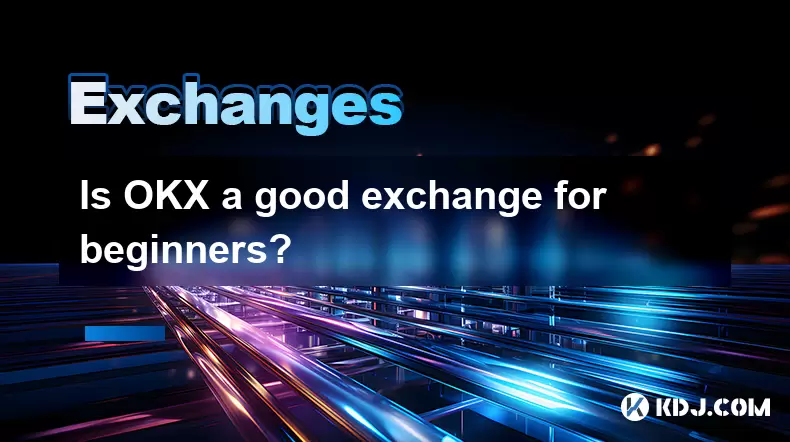
Is OKX a good exchange for beginners?
Jul 03,2025 at 05:00pm
What Is OKX and Why Is It Popular?OKX is one of the leading cryptocurrency exchanges globally, known for its robust trading infrastructure and a wide variety of digital assets available for trading. It supports over 300 cryptocurrencies, including major ones like Bitcoin (BTC), Ethereum (ETH), and Solana (SOL). The platform has gained popularity not onl...
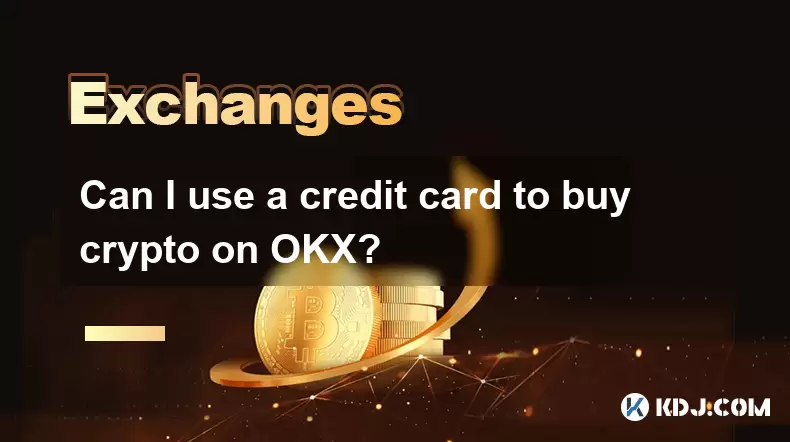
Can I use a credit card to buy crypto on OKX?
Jul 04,2025 at 04:28am
Understanding OKX and Credit Card PaymentsOKX is one of the leading cryptocurrency exchanges globally, offering a wide range of services including spot trading, derivatives, staking, and more. Users often wonder whether they can use a credit card to buy crypto on OKX, especially if they are new to the platform or looking for quick ways to enter the mark...
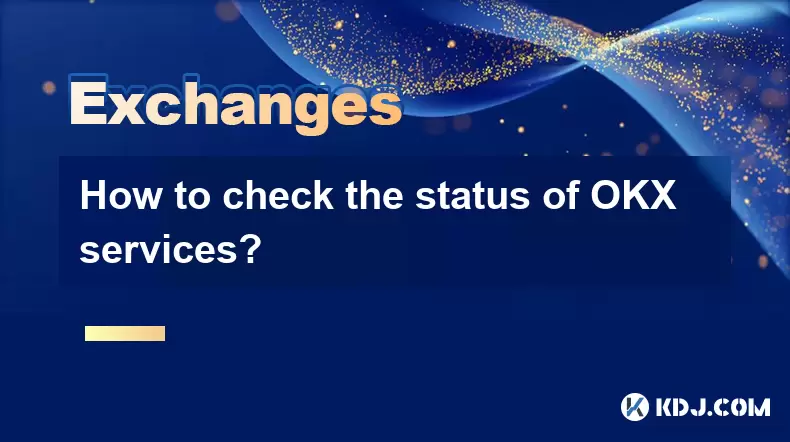
How to check the status of OKX services?
Jul 02,2025 at 11:14pm
What is OKX, and Why Checking Service Status Matters?OKX is one of the world’s leading cryptocurrency exchanges, offering services such as spot trading, futures trading, staking, and more. With millions of users relying on its platform for daily transactions, it's crucial to know how to check the status of OKX services. Downtime or maintenance can affec...
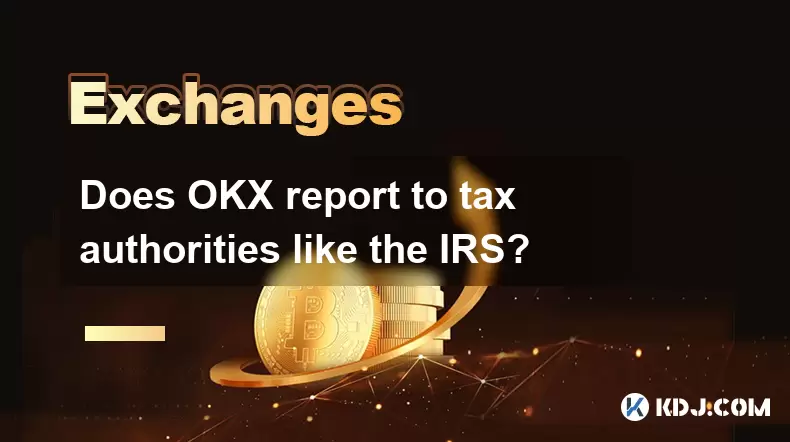
Does OKX report to tax authorities like the IRS?
Jul 03,2025 at 03:14pm
Understanding the Role of Cryptocurrency Exchanges in Tax ReportingCryptocurrency exchanges play a crucial role in facilitating digital asset transactions, but their responsibilities extend beyond trading and custody. As regulatory scrutiny intensifies globally, users are increasingly concerned about whether platforms like OKX report to tax authorities ...

How to get API keys from OKX for trading bots?
Jul 03,2025 at 07:07am
Understanding API Keys on OKXTo interact with the OKX exchange programmatically, especially for building or running trading bots, you need to obtain an API key. An API (Application Programming Interface) key acts as a secure token that allows your bot to communicate with the exchange's servers. On OKX, these keys come with customizable permissions such ...

What is OKX Signal Bot?
Jul 02,2025 at 11:01pm
Understanding the Basics of OKX Signal BotThe OKX Signal Bot is a feature within the OKX ecosystem that provides users with automated trading signals and execution capabilities. Designed for both novice and experienced traders, this bot helps identify potential trading opportunities by analyzing market trends, technical indicators, and historical data. ...

Is OKX a good exchange for beginners?
Jul 03,2025 at 05:00pm
What Is OKX and Why Is It Popular?OKX is one of the leading cryptocurrency exchanges globally, known for its robust trading infrastructure and a wide variety of digital assets available for trading. It supports over 300 cryptocurrencies, including major ones like Bitcoin (BTC), Ethereum (ETH), and Solana (SOL). The platform has gained popularity not onl...

Can I use a credit card to buy crypto on OKX?
Jul 04,2025 at 04:28am
Understanding OKX and Credit Card PaymentsOKX is one of the leading cryptocurrency exchanges globally, offering a wide range of services including spot trading, derivatives, staking, and more. Users often wonder whether they can use a credit card to buy crypto on OKX, especially if they are new to the platform or looking for quick ways to enter the mark...

How to check the status of OKX services?
Jul 02,2025 at 11:14pm
What is OKX, and Why Checking Service Status Matters?OKX is one of the world’s leading cryptocurrency exchanges, offering services such as spot trading, futures trading, staking, and more. With millions of users relying on its platform for daily transactions, it's crucial to know how to check the status of OKX services. Downtime or maintenance can affec...

Does OKX report to tax authorities like the IRS?
Jul 03,2025 at 03:14pm
Understanding the Role of Cryptocurrency Exchanges in Tax ReportingCryptocurrency exchanges play a crucial role in facilitating digital asset transactions, but their responsibilities extend beyond trading and custody. As regulatory scrutiny intensifies globally, users are increasingly concerned about whether platforms like OKX report to tax authorities ...
See all articles























